MSc In Archaeology - All Modules/Streams
The MSc in Archaeology allows subject specialisation, but also flexibility, by combining core modules with your option module, and topics chosen for your dissertation and summative essays. The dissertation allows you to develop a larger piece of research in which you can more fully explore a topic. It will allow you to develop your research skills and undertake self-directed and independent research that is a necessary basis for future doctoral research, and highly desirable in non-academic employment.
You will take the mandatory Archaeological Principles: Data & Theory in Michaelmas term as well as two core modules offered within your stream, one List A taught in the Michaelmas term, and the other from List B taught in the Hilary term. The fourth module is your option module (also from List B), also taught in the Hilary term; this is chosen from all available List B modules in any stream, or a module from the MSt in Classical Archaeology.
To note:
In some circumstances a subject taught in the MSc in Archaeological Science may be taken as your option module, however this is taught over Michaelmas AND Hilary term.
Not all modules are offered in all years. All offer holders will be advised of modules running in the year of entry as soon as possible (typically over the summer period prior to their arrival) and will be invited to submit provisional option choices by the end of September to aid initial meetings with supervisors.
Subject listing
You will take one List A subject, which must come from your stated Stream.
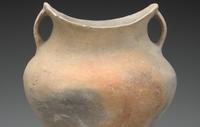
This course provides a survey of the archaeology of Ancient China from the early Neolithic (ca. 10,000 BP) through the Qin period (221-208 BC). Each lecture is arranged around a particular set of questions as well as a time period and/or region. In this fashion, this course explores the major cultural developments, focusing on the most important finds in greater detail, while at the same time discussing general archaeological questions and approaches.
The class commences by providing an overview of the environmental background as well as the history and organizational structure of archaeological work in China. After setting the stage in this fashion, the course will proceed chronologically, simultaneously covering questions of the emergence of agriculture, settlement patterns, burial practices, beliefs and ritual, craft production, the development of writing, complex societies, urbanization, and finally political unification.
Module Co-ordinator: Dr. Anke Hein
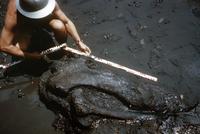
Lectures cover the principles of palaeoenvironmental reconstruction as well as exploring examples of how these data are used in archaeological site investigations, and in documenting broad shifts in past climates and landscapes and human behaviour. Examples are drawn from Old and New World settings. Teaching is based around seminars which consider the methods and theories relating to the discipline and its role within the field of archaeology. These themes are then further explored in the field or laboratory as appropriate.
Convenor: Dr. Mike Charles
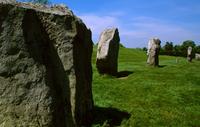
This course provides and overview of the key issues in landscape archaeology, highlighting the approaches and methods employed in the recording, management and interpretation of the archaeological landscape. It will explore the theoretical perspectives and methodological approaches which have furthered our understanding of the development of the cultural and physical landscape.
Topics will include:
- space vs. place
- funerary landscapes
- designed landscapes
- landscape and identity
- aerial archaeology
- archaeological prospection
- historic landscape characterisation
This course will provide students with a robust understanding of the approaches that are used in landscape archaeology, enable them to critically evaluate the datasets that are used to study past landscapes and apply appropriate methods to their own research.
Convenor: Dr. John Pouncett
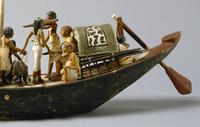
Approaches to maritime archaeology often concentrate on ships and their material remains and while this is an entirely legitimate approach, it can largely ignore the people and the communities that created, sustained and sailed on them.
This paper will provide an overview of key theoretical and conceptual issues relevant to maritime archaeology, and will explore a broad range of social, cultural, technological and environmental issues relating to the creation of maritime societies both on land and at sea. It will examine the development of maritime cultural landscapes and port towns, shipboard societies, and maritime subcultures, alongside themes such as maritime economies, warfare, technological change, and religion, ritual, and superstition.
The paper will stress archaeological perspectives on maritime societies, but will also draw upon anthropological, palaeoenvironmental, documentary, and other sources of information to offer a holistic approach. In covering this range of themes, the paper will address maritime societies and seafaring through time, from the earliest records of coastal subsistence and movement across the sea through to maritime activities documented in textual sources.
Convenors: Dr. Damian Robinson and Dr. Linda Hulin
This course examines the diverse societies of Europe from the end of the Western Empire in the fifth century to the Viking Age. It offers an overview of material culture change over a wide geographical region over a period of some 500 years, although the emphasis is on western and northern Europe, including Britain.
The objective of the course is to understand the social structure and economies of early medieval societies, the complex cultural interactions of in the period and the early stages of state formation. How did the influences of the late Roman Empire, the early Church, and the 'barbarian' Iron Age peoples of Europe together shape the culture, especially the material culture, of the early Middle Ages?
Although this is a period for which written sources are frequently scarce, it is essential to build up an historical framework from the reading lists provided.
The course is structured thematically and chronologically: the first two lectures provide an overview of ‘Eastern’ and ‘Western’ societies; Lectures 3-5 deal with social structure (as expressed in votive deposits and mortuary practices), and Lectures 6-8 with socio-economic development (the rural economy; the revival of towns and trade; the impact of the conversion to Christianity and of Viking incursions). The course also addresses the problems and potential of comparing written sources and material culture.
Convenor: Professor Helena Hamerow
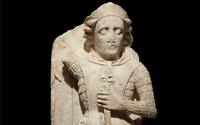
The option will focus on the period of c.AD 1100 – 1600 in Europe, with an emphasis on western and northern Europe, including Britain. Through the material remains we will investigate this period of dramatic economic, religious and social change, to develop our understanding of daily life and death for medieval populations. The module will cover the following topics: development of historical archaeology, medieval identities, economy, religion & belief, settlements & households, and material culture.
Convenor: Dr. Eleanor Standley
In this module we critically examine the archaeology of Mesolithic-Bronze Age Europe with reference to a series of themes, including:
- the development of hunter-gatherer societies after the Ice Age
- the spread and nature of early farming and herding practices
- changing funerary practices
- the increasing application of scientific methods, including 14C dating, stable isotopes and DNA
- the long-term consequences of farming/herding
- shifting materialities and identities
This paper aims to engage the student critically with the evidence for human societies of Mesolithic-Bronze Age Europe and the history of thought informing their interpretation. The student should gain a critical grasp of key shifts and themes in European prehistory and their role in the development of archaeological method and theory. The student should also develop a good grounding in the chronology and culture-history of later prehistoric Europe, and recent advances in the application of scientific methods.
Convenors: Prof. Amy Bogaard & Prof. Rick Schulting
Despite the extensive research conducted there over the last three decades, the archaeology of Saharan and sub-Saharan Africa is still largely unknown to most western audiences. This course focuses on two key processes in world prehistory over the last 10,000 years; the development and spread of systems of food-production and the formation of state societies. These processes are examined using data from several regions of Africa in order to illustrate the diversity of the African experience. In addition to this comparative focus, particular themes examined will include the relevance of oral tradition and linguistics to reconstructions of prehistory, the symbolic role of metallurgy in many African societies and the extent to which influences from outside Africa were of importance to the continent's development.
A course of eight lectures provides a chronological and thematic framework for this option, with tutorials offering an opportunity to explore particular issues in greater depth.
All the basic reading for this course is in English, but some knowledge of French is necessary for those wishing to investigate original papers on some aspects of West and Central African prehistory.
Convenor: Prof. Peter Mitchell
One of the most vital areas within archaeology over the last forty years has been the debate concerning method and theory. Archaeological theory has shifted from the attempts to generalise about human life developed by the New or Processual archaeologists from the 1960s onwards. In the late 1970s there was a reaction against grand theory and a greater concentration on local prehistoric sequences and the finer details of people's lives by the so-called post-processualists. Today there is a huge range of archaeological theories in use, focussing on issues of identity, gender, mind, material culture, art and aesthetics, as well as the more traditional questions of technology and subsistence. Archaeology has drawn on a huge range of theory from outside the discipline, ranging from evolutionary and ecological theories, post-modernist and post-colonial theories, feminist and gendered perspectives and theories of history and change. How relevant any or all of these theories are to archaeological subject matters and problems is debatable, but these are subjects that need debating if we are to decide the most profitable and productive directions for archaeology. Recently, archaeological method has become a source of intense debate, looking at how social and intellectual factors influence the ways in which archaeological sites are excavated and interpreted. Excavation and analysis are not purely technical matters, but have great influence on how we create our basic forms of evidence and make sense of them.
Loosely following a chronological line, this option will first survey later 20th century archaeological thought, starting with the notions of culture history, processual and post-processual archaeology. This survey of theories and methods will then form the backdrop to a more detailed engagement with theoretical developments since the late 1990s and leading up to the state of archaeological thinking today.
Convenor: Prof. Christopher Gosden (2022/23), Dr. Alexander Geurds (2023/24)
You will take two List B subjects, one of which must come from your stated Stream. In some circumstances, the second can be taken from modules from other post-graduate taught degrees at the School of Archaeology.
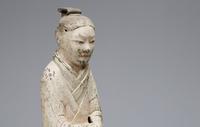
Ceramics have long garnered much attention in archaeological research as being present in a considerable percentage of archaeological sites worldwide and often chronologically sensitive as well as reflecting exchange patterns over short and long distances. East Asia and the Pacific Region in particular have seen major developments in ceramic technology from the very earliest ceramics of the world being produced there almost 20,000 years ago to historic-period advances in porcelain and glaze making. Furthermore, there is evidence for both ceramic products and underlying technologies having been exchanged over large areas for several millennia.
This option focuses on the emergence and development of ceramics in the prehistoric and historic Asia Pacific region, providing both general training in ceramic analysis and the specific context needed by students wishing to specialize in the study of the region. From the first modern archaeological excavations in China —which uncovered remarkable prehistoric assemblages of elaborately painted earthenware—to long-standing research on Imperial kiln sites and the recent discovery of the earliest pottery in the world, archaeological ceramics research has played an important part in uncovering the region’s past. Traditional archaeological approaches will, therefore, form the foundations of the course. However, students will also be shown how archaeological interpretations of pottery in the past can be shaped within frameworks drawn from ethnographic, ethnoarchaeological, and historical research. In addition, by connecting Archaeological Materials component of the MSc course, students will be given a general introduction to suitable techniques for the analysis of both high- and low-fired ceramics.
The course will consider how geography and climate help us to contextualize early finds and understand the character of later production. Focusing on concrete examples from various periods, the course will show how ceramics can help us to explore innovation, specialization and centralization in production, to both define and transgress the boundaries of cultural units, and to investigate the character of long-distance exchange.
The course is taught by several specialists who will provide students with insight and perspective into a wide range of research theories and methodologies. Within this framework, the students will have the opportunity to develop a framework for a research project of their own that may lead to a MSc dissertation or a DPhil thesis.
Convenor: Dr. Anke Hein
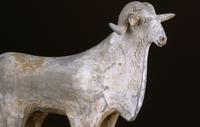
Please note, there will be changes to this module.
The forests, grasslands, and deserts of Eurasia create an ecological corridor across the northern half of the continent, bridging an apparent divide between East and West. Understanding the patterns of social connectivity, mobility, and human-environment interaction in this region is currently a major focus of interdisciplinary research.
Addressing itself to students seeking a broader context for developments in China, Europe or the Classical world, this course introduces the archaeology of northern Eurasia from the beginning of the Holocene to the rise of the first nomadic empires. It explores the transformation of Eurasian societies, the transmission of technologies and ideas, and the challenges of working between grand narratives and archaeological realities.
Convenors: Prof Rick Schulting and Dr. Anke Hein
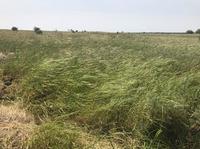
This module presents the latest (bio)archaeological research into the origins and establishment of agriculture in western Asia, focussing on the Epipalaeolithic-Neolithic but also considering case studies from subsequent periods to illustrate the long-term development of farming. Through lectures, tutorials and museum-based classes we set out the chronological and material culture framework to assess the direct archaeobotanical and archaeozoological evidence for domestication relationships and management ecology in different ecological settings and through time. Geographically we focus not only on the ‘Fertile Crescent’ (the arc of relatively high rainfall extending from the southern Levant in the south-west through Syria, SE Turkey and N Iraq in its central zone and down through the Zagros mountains of Iran in the east) but also on adjacent regions (e.g. central Anatolia) that are proving equally important to the origins story and/or to its longer term consequences.'
Convenors: Prof. Amy Bogaard and Dr. Mike Charles
The Asia-Pacific zone today is home to over half of the world’s population, and with it over half of the planet’s human diversity. This course brings together the latest research in archaeology, palaeoanthropology, genetics, linguistics, and other historical disciplines to uncover how this diversity emerged in the deep human past. We begin the course by looking at the extreme ecological and cultural diversity that characterises the Asia-Pacific before turning to the history of archaeological research on early human dispersals in the region. Next, we go all the way back to the early Pleistocene period and examine the distribution of fossil primates and hominins in the region. We then move forward in time to explore the multispecies worlds of the Middle Pleistocene; a time when Homo erectus, Neanderthals, Denisovans, and the diminutive Homo floresiensis and Homo luzonensis overlapped and sometimes even interacted with our own species, Homo sapiens. Next, we follow the paths of Homo sapiens throughout the diverse environments of mainland Asia, as they moved into arid deserts, humid rainforests, high altitudes, and cold latitudes. Our focus will then shift to how our species dispersed into the islands of Southeast Asia and then continental Australasia. Finally, we venture to far-flung shores, uncovering evidence for the earliest dispersals of people out of Southeast Asia and into the remote Pacific Islands during the Late Holocene. Throughout the course — canvassing the human experience across millions of years and tens of thousands of kilometres — our focus will be on the expanding repertoire of novel ecologies that humans came to inhabit, as well as how humans began to change and reshape these spaces, creating new anthropogenic worlds in which to live.
Convenor: Dr Dylan Gaffney
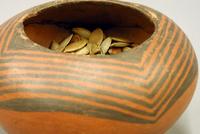
Many current debates in archaeology, ranging from the origins of agriculture to the rise and collapse of urban centres and empires, rely on ideas concerning the production and consumption of plants. This paper introduces the theory and methodology that underpin the analysis of macroscopic plant remains from archaeological deposits. Core topics include the identification of charred and waterlogged plant remains, issues of preservation and recovery, analytical approaches to the interpretation of archaeobotanical data and presentation of results. The practical component of the paper consists of eight laboratory-based classes (2-3 hours each) and covers the key stages of archaeobotanical investigation, from on-site recovery to sample sorting, identification, quantification and data analysis. The tutorial component (five sessions) focuses on principles underlying analytical techniques and broader issues of interpretation.
Convenor: Dr. Mike Charles

This module presents the latest (bio)archaeological research into the origins and establishment of agriculture in western Asia, focussing on the Epipalaeolithic-Neolithic but also considering case studies from subsequent periods to illustrate the long-term development of farming. Through lectures, tutorials and museum-based classes we set out the chronological and material culture framework to assess the direct archaeobotanical and archaeozoological evidence for domestication relationships and management ecology in different ecological settings and through time. Geographically we focus not only on the ‘Fertile Crescent’ (the arc of relatively high rainfall extending from the southern Levant in the south-west through Syria, SE Turkey and N Iraq in its central zone and down through the Zagros mountains of Iran in the east) but also on adjacent regions (e.g. central Anatolia) that are proving equally important to the origins story and/or to its longer term consequences.'
Convenors: Prof. Amy Bogaard and Dr. Mike Charles
For details of this module, please see Archaeological Science - Bioarchaeology.
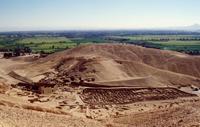
This Module provides a practical introduction to the use of Geographic Information Systems (GIS) in archaeology. GIS has transformed the way in which archaeologists manage spatial data, think about spatial relationships and engage the public in research. The analytical, interpretative and communicative potential of GIS will be explored within the broader context of spatial archaeology, highlighting the methodological and theoretical implications of GIS-based approaches with reference to key case studies.
This module introduces the concepts of space, tools of representation and processes of reasoning which underpin archaeological applications of GIS. Students will learn how to critically evaluate the methods employed by other researchers and apply appropriate methods to datasets created during practical classes and their own research.
Convenor: Dr. John Pouncett
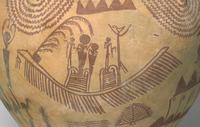
Maritime archaeology can be a very technical discipline and consequently the purpose of the course is to provide an up-to-date overview of the current methods and techniques in maritime archaeology and its allied sub-disciplines of maritime history and anthropology.
The module can include sessions on ethics, survey and excavation techniques, wetland archaeology, approaches to deepwater, interpreting nautical architecture, maritime object biographies, maritime ethnography, presenting maritime archaeology to different audiences.
There are no temporal or geographical limits upon the examples of best and worst practise that will be used in this course.
Convenor: Dr. Damian Robinson
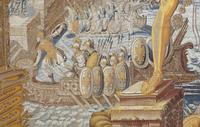
The course examines the development of seafaring through material cultural and maritime history. It will generally concentrate on the ancient cultures of the Mediterranean and connected regions, although other places and time periods can be investigated if there is sufficient interest.
The main trends in the historical development of seafaring cultures will be examined, including the technological development of both military and merchant ships and their cargoes, the growth of ports and nautical architecture, as well as more synthetic approaches to issues such as the maritime economy, naval warfare, the spread of knowledge, and the growth of polities.
The nature of the archaeological, textual and iconographic evidence will be discussed in order to understand the limitations and opportunities inherent in each form of evidence.
Convenor: Dr. Damian Robinson
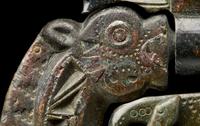
This course covers roughly the period from 450-750 and examines current debates in several areas of the subject, including migration theory and the nature of post-Roman Britain; death and burial; the links between material culture and identity; settlements and settlement patterns.
Convenor: Professor Helena Hamerow
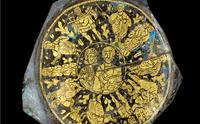
Current estimates and characterisations of religion in Late Antiquity are still largely based on what texts tell us. Yet, ‘material religion’ – one of the most exciting developments in the contemporary field of religious studies – stresses that religion is not something one does with speech or reason alone, but also with the body, the objects it touches and the spaces it inhabits. Moreover, material culture in the form of objects, images and landscapes shaped religion. Consequently, archaeology is an extremely promising resource to gain insight into how people in the past induced experiences of supernatural power. This course scrutinizes seemingly inconsequential archaeological contexts to evaluate how religious considerations were expressed and how salient they were in various aspects of daily life in Late Antiquity. The incredibly rich archaeological record for this topic includes small finds and architecture with religious imagery or texts, as well as unmarked items of which the state of preservation (e.g., unusual traces of wear or fragmentation) or only the archaeological context suggests an extraordinary usage (e.g., as is often the case with building offerings). In-depth study of this material is combined with archaeological theory and theory from religious studies.
Convenor: Dr. Ine Jacobs
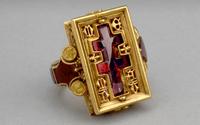
This course investigates the material culture of mainland Britain, focusing on objects that were worn and adorned clothing during the period c.AD 1200-1600. Using archaeological material, and other sources of evidence, the course will examine how these artefacts were used in the daily lives of people, and how their context of use was affected by major social events, such as the Black Death, the Wars of the Roses, and the Reformation. Themes covered will include the history of artefact studies, fashion and consumption, courtship, sexuality, devotion and pilgrimage, magic and protection, and death and burial. A multidisciplinary approach will be taken to understand the themes fully, drawing predominantly on archaeological evidence, but also using material from history, art history, anthropology and related disciplines. Material from the Ashmolean Museum's medieval collections will be made use of, and how medieval material evidence is collected and disseminated will also be investigated.
Convenor: Dr. Eleanor Standley
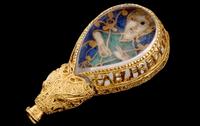
The Late Saxon period (c 950-1066) saw England emerge as a unified nation and by the eleventh century its productivity and wealth made it worth conquering – not once, but twice. This course considers key areas of Late Saxon studies to which archaeology has made a major contribution, namely: the development of towns and the economic basis of kingdoms; the nature of the Scandinavian presence in the Danelaw; the origins of the manor; the development of trade and industry; and the exercise of power. Classes will be seminar-based and will consider specific case-studies as well as current academic debates. Topics covered are:
- The archaeology of civil defence and frontiers in Mercia and Wessex
- Scandinavian Impact I: Economy and Urbanism
- Scandinavian Impact II: Identity, rural settlement and burial
- Exploitation of the Land: Farmers, Lords and the Medieval ‘Agricultural Revolution’.
- Towns, trade and Industry
- Archaeology of Governance: Assembly places and execution cemeteries
Convenor: Professor Helena Hamerow
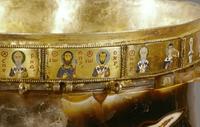
The course covers the urban development of Constantinople from its foundation by Constantine in 324 until its fall to the Ottoman Turks in 1453. Combined archaeological and written evidence forms the basis for study of utilitarian infrastructure (defence, water supply, commercial and harbour facilities, etc.), ceremonial/imperial architecture (palace, hippodrome, honorific monuments), and cult buildings. Key written texts to consult include the Notitia urbis Constantinopolitanae (ca. 425), the Miracles of St. Artemius (ca. 650), the Parastaseis syntomoi chronikai (8th c.), the Book of the Eparch (912) and the Book of Ceremonies (6th-10th c.). Material evidence is provided by surviving structures (circuit walls, cisterns, churches, etc.), and excavated sites (Great Palace, Saraçhane, Zeuxippos Baths, etc.). Consideration will be given to the character of the city during its initial period of expansion (4th-6th c.) and in the following periods of recession (8th c.) and economic recovery (from the 9th c.) until its fall to the Fourth Crusade (in 1204) and its final period (1261-1453).
Convenor: Dr. Ine Jacobs
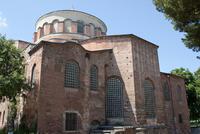
The course provides an overview of architectural development from the 4th to the14th century, covering buildings belonging to the secular and religious, public and private spheres. Individual types include urban honorific monuments, administrative buildings, baths, defensive installations, communal accommodation (barracks, inns, hospitals, monasteries), habitation, tombs, churches (basilical and centralized) and synagogues. Building and decorative materials are studied.
Convenor: Dr. Ine Jacobs
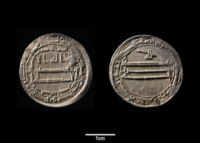
As a discipline, Viking-Age archaeology has seen tremendous change over the last 20 years: a result of a wealth of new archaeological discoveries, the application of advanced scientific techniques (aDNA, stable isotope analysis, material provenancing techniques), and the field’s embrace of new theoretical and geographic perspectives, all of which has developed alongside growing public engagement with the subject. These developments have challenged established narratives concerning the social structure, landscape and economy of the Viking Age. This course provides students with an opportunity to consider and debate the field’s most dynamic and controversial topics.
Through a combination of lectures, small group discussion, and museum-based classes, students will discuss issues such as the timings and motivations of the Viking expansion, the construction of gendered and other social identities, the importance of trade in silver, fur and slaves, pre-Christian ritual activity and and the nature of Scandinavian activity in Rus and the Eastern Baltic. We will evaluate evidence from urban and rural settlements, burials, monuments and portable antiquities, from within Scandinavia and the Scandinavian overseas settlements. We will assess the latest archaeological and scientific discoveries, developing a source-critical awareness of the limitations of different strands of evidence.
Convenor: Dr Jane Kershwaw
Southern Africa has not only produced some of the oldest fossils of anatomically modern humans, but is now producing significant evidence for the origins of recognisably modern forms of behaviour long before the start of Europe’s Upper Palaeolithic. The subcontinent also boasts a rich and well-understood rock art tradition, research on which has produced powerful new insights into rock engravings and paintings elsewhere in the world. In addition, anthropological research in southern Africa has made a significant contribution to both the development of general models of hunter-gatherer economic and social organization and their ongoing critique.
This course provides a broad overview of some of the main recent developments in the archaeology of southern Africa’s hunter-gatherers. The overall treatment is chronological, from the first anatomically modern humans to the current situation of Bushman communities in the Kalahari. Within this framework, the emphasis is placed on changing paradigms in the explanation of the Later Stone Age past and on the relationship between archaeological and anthropological data for understanding social and economic change among hunter-gatherer societies.
In addition to lectures, tutorials provide an opportunity to explore particular issues in greater depth. Some sixteen tutorial topics have been developed so far and students can choose from among these, or request others not yet taken. All the literature recommended for reading for this option is in English and no prior knowledge of African archaeology is assumed.
Convenor: Prof. Peter Mitchell
The Asia-Pacific zone today is home to over half of the world’s population, and with it over half of the planet’s human diversity. This course brings together the latest research in archaeology, palaeoanthropology, genetics, linguistics, and other historical disciplines to uncover how this diversity emerged in the deep human past. We begin the course by looking at the extreme ecological and cultural diversity that characterises the Asia-Pacific before turning to the history of archaeological research on early human dispersals in the region. Next, we go all the way back to the early Pleistocene period and examine the distribution of fossil primates and hominins in the region. We then move forward in time to explore the multispecies worlds of the Middle Pleistocene; a time when Homo erectus, Neanderthals, Denisovans, and the diminutive Homo floresiensis and Homo luzonensis overlapped and sometimes even interacted with our own species, Homo sapiens. Next, we follow the paths of Homo sapiens throughout the diverse environments of mainland Asia, as they moved into arid deserts, humid rainforests, high altitudes, and cold latitudes. Our focus will then shift to how our species dispersed into the islands of Southeast Asia and then continental Australasia. Finally, we venture to far-flung shores, uncovering evidence for the earliest dispersals of people out of Southeast Asia and into the remote Pacific Islands during the Late Holocene. Throughout the course — canvassing the human experience across millions of years and tens of thousands of kilometres — our focus will be on the expanding repertoire of novel ecologies that humans came to inhabit, as well as how humans began to change and reshape these spaces, creating new anthropogenic worlds in which to live.
Convenor: Dylan Gaffney
This module will provide an overview on the archaeology of Iron Age Europe from the beginnings of the Iron Age to the Roman conquest (c. 800 BC – AD 50). In many parts of Eurasia, the 1st millennium BC marked a fundamental turning point that was accompanied by the appearance of a whole range of phenomena that were to play an important part in shaping our world. Some key elements include processes of early state formation and urbanisation, the appearance of the first coinage, and the expansion of intercontinental trade networks. In temperate Europe, this age of increasing mobility of people, ideas, and goods saw the development of the first urban agglomerations, the appearance of sumptuous aristocratic burials, and close contacts between the communities of ‘Celtic’ Europe and the Mediterranean world (particularly with Greeks, Etruscans, and Romans).
The module will address topics such as the origins and spread of Celtic languages and Celtic art, the development of fortified settlements (hillforts and oppida), the social interpretation of burial data, the identification of migrations, and the impact of the Roman conquest. It also aims to critically analyse the concept of 'Celts' and its use (and misuse) in modern political and societal discourses.
Convenor: Manuel Fernández-Götz
Cognitive archaeology is a fast-growing field of research dedicated to the comparative study of human cognition from a material culture-perspective. In particular, cognitive archaeology brings together three major related specializations: 1) the study of the biosocial origins and evolution of human intelligence (broadly known as Evolutionary Cognitive Archaeology ECA), 2) the study of the unity and diversity of the human mind (past and present), and 3) the anthropological and experimental study of the interaction between cognition and material culture. The proposed option integrates all three major specializations bringing together the archaeological, the anthropological and the evolutionary dimensions of cognitive archaeology. It offers a critical synthesis of major issues related to the social and bodily dimensions of human intelligence and especially the effects that the changing socio-material environment (artificial or natural) has on humans and upon their minds. The major aim of the option is to explore the nature of the relationship between cognition and material culture—what it is, how it changes, and what role observed transformations in human societies play in forging those links. Using a variety of archaeological and anthropological themes and case studies the option will offer a comparative examination of the impact of material culture on the making and evolution of human intelligence (brain and body) from its earliest beginnings to the present day.
Convenor: Dr Alex Aston
Colonialism has been the dominant element of world history for the last five hundred years and an important aspect of world history for the last 5000 years. The legacy of colonialism is pervasive in today’s societies and archaeology has much light to throw on colonial forms past and present, complementing written accounts and oral histories. A comparative approach to colonial past and present is taken in this module, drawing on perspectives from post-colonial theory, anthropology, world-systems theory as well as archaeology. Material culture from archaeological sites is an important source for the study of colonialism, but so too are museum collections and archival materials. Through its concentration on the material aspects of human existence archaeology has a unique perspective complementing those drawn from many elements of post-colonial theory which do not consider the material world in any great detail. The case studies considered cover diverse geographical areas and time periods. These range from (and are not limited to) early Mesopotamia, Greek settlements, the Roman Empire, the Incas and Aztecs, colonialism in Latin America post-1492, evolution of Swahili settlements in East Africa post AD900, European settlement along the Atlantic coast of Africa and colonialism in Africa post-Berlin Congress of 1884/5. (Please note, there may be changes to the content of this module).
Convenor: Dr Ashley Coutu
The module ‘Archaeology and the Contemporary World’ considers the place of the discipline of Archaeology in our contemporary world.
This module will introduce aspects of the history of Archaeology, read through the lens of contemporary global, social, intellectual and political concerns. Through lectures and seminars, the paper explores the discipline’s past not so much as history but as tradition, and not as changing theories or methods but as enduring practices and structures. The aim will be to undertake close readings of significant texts from the disciplinary past and to bring them to bear upon contemporary social and cultural questions facing universities, heritage bodies, museums, and the world today.
Themes such as Humanity and Objectivity; Decolonisation and Anti-colonialism; Museums and Visuality; Conflict and Violence; Landscape and the Environment; Time and Duration will be covered during the teaching.
Convenor: Prof Dan Hicks
This module provides a critical introduction to cultural heritage for archaeologists, offering an extensive and inclusive perspective. By delivering crucial theoretical frameworks and practical insights, the module aids students to situate archaeological discoveries and research within the broader social, cultural, and political contexts in which the processes of conceptualising and safeguarding cultural heritage take place.
Lectures and tutorials will explore the nature of cultural heritage (both tangible and intangible), its relationship to archaeology, what it means to people, and its more formal interpretation from a globalised perspective, such as in World Heritage. The module will also consider how cultural heritage contributes to the creation of individual and group identities, how it is valued by various actors and stakeholders over time, and how it is contested through colonial pasts, nation-building, armed conflict and ideological destruction, as well as minority and refugee identities. The role of heritage agencies, from UNESCO to national government agencies, museums, and civil society in heritage management will be assessed. Risks to heritage from factors such as climate change, development, tourism and conflict, including the weaponization of cultural heritage, will be discussed within the framework of risk management and heritage protection.
While the module considers cultural heritage studies on a global level, it encourages a focus on the Global South.
Convenors: Dr Bill Finlayson and Dr Bijan Rouhani
Archaeological Science Modules
Please note: Archaeological Science Modules are taught across two terms. If you wish to take an Archaeological Science module please contact admissions_masters@arch.ox.ac.uk.
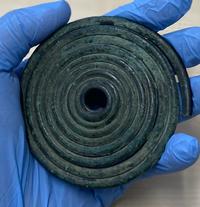
This course explores the use of scientific analysis of archaeological artefacts to elucidate questions of archaeological interest. We will cover a broad introduction to the study of materials, and specifically materials in archaeological science. We will discuss the fundamentals of material structure for each of the major classes of materials exploited by people across the past (metals, stone, ceramics, glass, organics), the how, where and why of the sourcing of raw materials, as well as the complexity and variation of production processes. Through this, we will also cover the major techniques used in the analysis of archaeological materials, and their strengths and weaknesses, and their usefulness for different kinds of materials and question. At the heart of this course will be the why of analysis, and what it can bring to archaeology.
This course is taught through lectures, seminars and tutorials, as well as practical laboratory teaching and experimental archaeology.
Coordinator: Prof Shadreck Chirikure
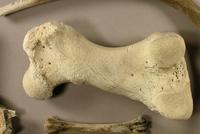
Scientific methods are playing an increasingly important role in archaeological research, and this is particularly true of organic materials. Developments in the analysis of stable isotopes, lipid residues, trace elements and ancient DNA are providing new lines of evidence for a host of central questions, including past subsistence and environmental change, migration and genetic origins. This course provides a detailed, critical overview of these topics, both in terms of the techniques themselves, and their archaeological applications. More traditional bioarchaeological analysis of human, faunal, and plant remains also feature.
The taught element of the course involves lectures and seminars that are complemented by interactive sessions involving the investigation of plant, animal and human remains as well as the generation and analysis of isotopic data. It makes use of the ongoing research of both members of staff and researchers to present the latest approaches.
Coordinator: Prof Greger Larson

We need to be able to put past events onto a timescale if we are to understand them properly. Scientific dating allows us to explore the relationship between different sites and regions. Furthermore, chronologies built up from dating and other evidence enable us to understand processes at work in the archaeological record. This course looks at the scientific dating methods most commonly applied, including the practical aspects of radiocarbon, luminescence, tephrochronology and dendrochronology. It also provides an introduction to the use of statistical methods for combination of information from direct dating and other archaeological information. There is a strong emphasis on the critical evaluation of dating evidence.
Coordinator: Dr Rachel Wood
Classical Archaeology Modules
Please note: Not all Classical Archaeology Modules are taught in compatible terms with the MSc in Archaeology. If you wish to take an Classical Archaeology module please contact admissions_masters@arch.ox.ac.uk.
With the collapse of the palatial system around 1200 BC, Aegean communities needed to adopt new social-economic structures to survive the crisis. The ones which achieved the fastest adjustment were also those which continued to be in contact with communities in the Eastern Mediterranean. The course examines the nature of their exchange with the East, both during the Late Helladic IIIC period and the Early Iron Age. It scrutinizes evidence of such exchanges, providing the essential background for understanding the period which led to the so-called 'Orientalizing revolution'. Study cases include: the revival of communication in the Late Helladic IIIC middle; Euboean enterprise in the East; Cyprus and the Aegean in the eleventh and tenth centuries BCE; Phoenicians and North Syrians in the Aegean; patterns of exchange, from gift-exchange to trade networks.
Course co-ordinator: Professor Irene Lemos
Although in the fringe of the Greek poleis, Macedonia figures prominently in Greek affairs from the late 6th century BC (during the period of Persian control of the region), because of its resources (timber, gold and silver mines) and its position along trade routes. From the 4th century BC and especially during the reigns of Archelaos and Philip II, it becomes a region fully involved in Greek culture and in the Hellenistic period it was one of the major kingdoms in the Aegean. Following the discovery of the royal burial mound at Vergina, ancient Aigeai, in 1978, there has been a drastic increase in the archaeological exploration of Macedonia and in publications about the history, epigraphy, archaeology and art of the region. Many new sites have been investigated both in the heartland of Macedonia, west of Axios, and in the territories that were annexed by Philip II (Aigeai, Pella, Dion, Veroia, Pydna, Aiani, Thessaloniki, Amphipolis, Philippi, Demetrias in Thessaly and smaller centres, such as Petres). The very rich body of archaeological material from the region gives insight into domestic architecture, the emergence of palatial architecture and administration (palaces at Pella, Aigeai and Demetrias), civic life, funerary iconography and architecture, minor arts (gold jewellery, glass manufacture, terracottas), economic activity, local cults and the representation and self-promotion of Macedonian kings within Macedonia and in the Greek world. In many cases it is also possible to trace developments to the 6th and 5th centuries BC, when Temenid control of the heartland of Macedonia became tighter but also to comprehend the impact of Rome in the region, and the transformation of certain cities such as Veroia, Thessaloniki, Dion into vibrant economic centres in the Late Hellenistic and Roman periods.
The aim of the option will be: a) to examine the material culture of the region from roughly the 6th century BC to the late 2nd c BC and compare it with that of other Greek regions; b) to identify, when possible, what are, local, Macedonian, features in the material record.
Themes that can be explored in depth include: Macedonian cities; funerary archaeology; religion and cult; economic activity; art in Macedonia; Demetrias as a Macedonian city.
Course co-ordinator: Dr Maria Stamatopoulou
This course examines archaeological and documentary evidence for religion in the Aegean Bronze Age. It addresses issues such as what is meant by ‘Minoan’ as distinct from ‘Mycenaean’ religion with reference to problems of ethnicity and identity, how belief systems and cognition more generally can be approached through material culture alone, and how documentary and archaeological sources can be used in tandem. A broadly anthropological approach is adopted and close attention paid to debates in other areas of archaeological research, especially the ancient Near East.
Course co-ordinator: Dr Lisa Bendall
Writing is often seen as a fundamental characteristic of 'civilisation'. When Arthur Evans discovered clay documents at Knossos on Crete, the prehistoric societies of the Aegean joined their western Asian counterparts as 'truly civilised'. This course offers an introduction to the writing and administrative systems used in the Aegean in the second millennium BC, with an emphasis on the Linear B script of Crete and mainland Greece. Major topics include: a cross-cultural examination of the uses of writing and administration; the predecessors to Linear B in the Aegean (Cretan Hieroglyphic and Linear A); the discovery of Linear B and its decipherment; the nature of the Linear B script, its history and pattern of use; what Linear B can tell us about the internal organisation of the major Mycenaean palaces (Pylos and Knossos); what Linear B can tell us about their external organisation; other scripts in use in the Mediterranean. There will also be a practical class using the Linear A and B materials in the Ashmolean Museum.
Course co-ordinator: Dr Lisa Bendall
This course examines trade, specifically focusing on issues of identity and interaction in the Aegean Bronze Age, both within the Aegean and beyond. The Aegean was a fertile ground of interaction for various societies and social groups, particularly through maritime activities as the sea formed a connector rather than divider. The rich archaeological record for such interaction includes imported and exported artefacts and raw materials found primarily in settlements, shipwrecks and burial assemblages, but also evidence for more intangible exchanges of ideas, craft techniques, and cultural knowledge.
Course co-ordinator: Dr Lisa Bendall
Religion was central to ancient Greek life and culture. For the ancient Greeks, conceiving divine power as a multitude of deities, each with a specific field of influence over human affairs, religion offered a means of comprehending, systematizing and communicating with the unseen forces governing the human condition. The gods were omnipresent, and men appealed to them in their chosen residences, sanctuaries, cult places and holy sites. Large and small, urban and rural, places of worship existed in all parts of the Greek world and were the focus of travels, rituals, cultural exchange, political propaganda. The best in Greek art and the finest architecture were made for gods. The course will explore the settings, spaces, shapes, and structures of ancient Greek cult places, the votive dedications and the rituals associated with them, in order to investigate broad theoretical and methodological issues. Through a number of selected case-studies, the students will approach issues such as the role of religion in the formation of the polis; classical/Hellenistic approaches to polis-religion; the nature of private cults; the foundation of new cults; the material evidence relating to royal cults.
Course co-ordinator: Dr Milena Melfi
This option will examine what archaeology can tell us about the life of women in the Greek world. The period covered is roughly from the 8th century BC to the end of the Hellenistic period. The close study of literary, archaeological, epigraphic evidence and the visual imagery regarding women will aim to appraise and occasionally challenge paradigms about women's life and position in ancient Greek society. Themes that will be explored are: the role of women in cult and festivals; women and burial; working women; the adornment of women; education of women; images of women in classical Athens (pottery, grave reliefs); Hellenistic statuary of women; terracottas.
Course co-ordinator:
Current estimates and characterisations of religion in Late Antiquity are still largely based on what texts tell us. Yet, ‘material religion’ – one of the most exciting developments in the contemporary field of religious studies – stresses that religion is not something one does with speech or reason alone, but also with the body, the objects it touches and the spaces it inhabits. Moreover, material culture in the form of objects, images and landscapes shaped religion. Consequently, archaeology is an extremely promising resource to gain insight into how people in the past induced experiences of supernatural power. This course scrutinizes seemingly inconsequential archaeological contexts to evaluate how religious considerations were expressed and how salient they were in various aspects of daily life in Late Antiquity. The incredibly rich archaeological record for this topic includes small finds and architecture with religious imagery or texts, as well as unmarked items of which the state of preservation (e.g., unusual traces of wear or fragmentation) or only the archaeological context suggests an extraordinary usage (e.g., as is often the case with building offerings). In-depth study of this material is combined with archaeological theory and theory from religious studies. Themes that can be explored in depth include: decoration of game boards; location and content of building offerings; graffiti applied at entrances; late antique burials; decoration of household utensils; co-existence of artefacts associated with ‘competing’ religions within one context.
Course co-ordinator: Dr Ine Jacobs
In exploring the development of towns and their related territories in the first three centuries AD, this course provides an introduction to Roman urbanism and the lively modern debate over how it worked and whom it served. The study of the physical design of the city, its public and private buildings, and its infrastructure, along with the objects of trade and manufacture, is placed in the broader context of the types and patterns of rural settlement, agricultural production, transport and communications. This allows various themes to be investigated, including what it meant to live in a Roman town, and in its countryside, and what contributed to the remarkable prosperity of urban centres before the widespread retrenchment of the third century. Those taking the course will become familiar with the physical character of Roman cities based on representative sites, and with major landscape studies in Italy, Greece and North Africa. Particular attention is paid to problems and biases in assessing the character of the physical evidence; and in testing theoretical models against hard data.
Course co-ordinator: Prof. Andrew Wilson
The Greek polis began to emerge in the eighth century BC as settlements and populations became more concentrated, but the public buildings and sophisticated appearance we might associate with the idea of a city was slower to develop than the initial ideas about statehood. The course studies the material evidence relating to Greek cities from c. 750 to 50 BC, and analyses their physical evolution in relation to the changing conception of a polis. The aim is to relate the physical remains to the political, social and economic developments in ancient Greek societies, and to see how these developed in response to the continually changing historical context. Areas of emphasis will include the physical provision for political institutions, the development of sanctuaries, the choice and use of imagery for public display, domestic architecture and domestic life, and the defence of city and territory.
Course co-ordinator: Prof Irene Lemos
Study of archaeology from the Euphrates to the Hindu Kush in the two centuries after Alexander the Great's conquests is a rapidly developing field, in part prompted by the influx of new evidence from excavations over the last few decades, but also through critical response to early studies and the application of new methodologies and theoretical approaches. This course spans the Seleucid, Parthian, Greco-Bactrian, and Indo-Greek kingdoms, and the territories of local dynasts in Persis, Characene, and Elymais, using an array of material, drawing on numismatic, architectural, archaeological, art historical, and epigraphic sources. Key topics include ruler representation and display, religion, city foundations, and trade, among others. Questions centre around the interplay between Greco-Macedonian and local forms, and students will evaluate what we can learn from the material record about cross-cultural dynamics in this politically turbulent period. Students will engage in appraisal of recent trends in academic debate, such as postcolonial theories of cultural identity and globalization, and are encouraged to develop their historiographical analysis as well as their knowledge of the eastern regions of the Hellenistic world.
Course co-ordinator: Dr Rachel Wood
According to some views of the ancient world, the Roman economy was stagnant and under-developed; according to others, the Roman empire saw economic activity on a scale unparalleled again until 16th-18th century Europe, with the mass-production of certain types of artefact, agricultural specialisation for export, and considerable amounts of long-distance trade. This course examines the contribution which archaeology can make to that debate, and where between these two extremes the truth might lie. Topics covered include: coinage and the metal supply; the economic impact of technological progress; agricultural specialisation and investment; the use of ceramic data to illuminate trading patterns; the interpretation of shipwreck evidence; the effect of ancient transport technologies on the distribution of goods; urban crafts and the involvement (or otherwise) of elites in non-agricultural activities.
Course co-ordinator: Prof. Andrew Wilson
One of the most fascinating periods in the study of Early Greece is that which starts with the rejection of the palatial system and ends with the appearance of the city-states. The course examines the archaeological evidence from a number of sites (mostly cemeteries and settlements, with the addition of a few cult sites). Broad themes and trajectories in this period are studied through specific sites, such as Argos, Athens, Corinth, Knossos, Lefkandi, and Tiryns. The course also considers recent approaches to the period, with an emphasis on the archaeological study of regional societies and their political and social structures. The transformation of these early communities from their Late Bronze Age past is examined closely, highlighting aspects of continuity and discontinuity and elucidating survival or rejection of earlier social structures.
Course co-ordinator: Prof Irene Lemos
Communities and individuals in the eastern Aegean area made outstanding contributions to literature, philosophy, and art in the Archaic period. This course studies the material and visual culture of early Ionia and the eastern Aegean. Recent archaeological work in major Ionian sites, such as Ephesos, Klazomenai, Miletus, Phocaea, and Samos, also provide the opportunity to study the development of urban space (public and domestic architecture), the growth of funeral display, and the emergence of sanctuaries.
Course co-ordinator: Prof Irene Lemos
This course explores the development of Etruscan civilisation in the first millennium BC and its significance for understanding contemporary and later developments around the Mediterranean. Within a broadly chronological structure, subjects ranging from the rituals of daily life and death to the development of autonomous cities such as Veii, Tarquinia, and Caere are studied using a range of archaeological, artistic, scientific, historical, and linguistic evidence. Emphasis is placed upon close examination of sites and artefacts including, where practical, those held in local museums.
Course co-ordinator: Dr Charlotte Potts
The option explores the relationship between Graeco-Roman art and the Buddhist art of Gandhara (roughly Khyber Pakhtunkhwa, Pakistan and parts of Afghanistan) around the first to third centuries AD. This has been a central puzzle since systematic study of Gandharan art and archaeology began in the middle of the 19th century, and it remains largely unresolved, with much debate as well as new insights from fresh research and excavation. The subject casts light upon the global movement of classical art traditions in the Hellenistic-Roman imperial periods and on mechanisms by which images and ideas were transmitted. It is also inseparable from the modern imperial context for archaeology in South Asia, and Gandharan art has constantly been claimed as heritage by a spectrum of modern observers, from European imperial administrators to Pakistani curators to Indian nationalists… So the reception of the this relationship between ‘East and West’ will also be touched on. In addition it raises particular methodological questions e.g. about chronology, looting, and the impact of forgeries.
Course co-ordinator: Professor Peter Stewart
The new pictorialism of the classical period and later was deployed in the surviving media of tomb paintings, floor mosaics, and domestic wallpainting, as well as in the lost works described by ancient authors. The course studies the following major topics: the beginnings of Greek painting in the archaic period and its relation to ceramic art; fifth-century painting through the oblique evidence of painted pottery and ancient texts on big names such as Polygnotos and Zeuxis; the new evidence of tomb paintings from Macedonia and Thrace in the fourth and third centuries; the redeployment and manipulation of the Hellenistic repertoire in wallpainting and mosaic floors at Rome and Pompeii in the second and first centuries BC; and the use of the different wall systems and categories of painted subject to decorate and articulate domestic and reception spaces in Pompeian houses. The emphasis of the course is on the continuity between the Greek and Roman periods, on the invention and continuous reformulation of a common pictorial repertoire.
Course co-ordinator: Dr Joshua Thomas
The Greek Coinage option is open to anybody interested in learning about money and coinage in the Greek world - no experience with coins is needed. Through a series of lectures, tutorials, and coin-handling sessions, students will gain an overview of Greek coinage from the beginnings of electrum in the sixth century down to the period of Roman rule. The course will focus on how coins can be used as evidence for the study of classical archaeology and art, exploring themes such as how coins can be used to document patterns of trade, reflect developments in classical art, and provide examples of civic and personal iconography. The Coin Room of the Ashmolean Museum houses one of the finest collections of Greek coins in the world and is a key centre for the study of ancient coins. Students may gain experience of working with coins by participating in a range of volunteer projects based on the collection. The Coin Room also houses the numismatic section of the Sackler Library and maintains an extensive collection of plaster casts and auction catalogues.
Coordinators: Dr Heuchert
This course studies burial practices in the Greek world from the Archaic to the end of the Hellenistic periods. The principal themes that will be explored are the: methodology of mortuary archaeology; treatment of human remains; grave goods; marking; cemetery organization; commemoration of the dead; the question of the heroization of the dead in the post-classical poleis. Besides Athens, sites that can be studied in depth, are for: mainland Greece: Corinth, Boeotia (Tanagra, Thebes, Akraiphion), the Cyclades (Paros, Naxos, Thera, Delos), Rhodes, Thessaly (Krannon, Pharsalos, Demetrias), Macedonia (Aigai/Vergina, Pella, Aiani, Archontikon, Sindos, Amphipolis), Epirus (Ambrakia), Thasos as well as Taras, Metaponto, Syracuse, Acragas in the west; Pantikapaion on the Black Sea; Halikarnassos; Xanthos, the Troad in Asia Minor.
Coordinator: Dr Maria Stamatopoulou
Large statues and reliefs in stone and metal were among the most prominent public symbols in ancient Greek society, and surviving examples retain today a strong visual impact. Dramatic new discoveries, from excavation and shipwrecks, are constantly revising and sharpening our knowledge of this distinctive historical phenomenon. The course studies the sudden emergence of large marble statues in the archaic period, the revolutionary figures that embodied the new visual system that we know as 'classical' in the fifth and fourth centuries, and the major new categories of sculpture that were developed or invented in the third and second centuries -- such as honorific portraits, heroic groups, and genre statues. The course has an excellent resource in the Cast Gallery of the Ashmolean Museum, which contains a collection of some 600 plaster casts of Greek statuary and relief. Subjects include: archaic kouroi; the Siphnian treasury; the early classical revolution; the Olympia and Parthenon sculptures; athletic statuary; grave reliefs; early Hellenistic portraits; the Great Altar at Pergamon; Hellenistic genre; the Laocoon and Sperlonga groups.
Course co-ordinator: Dr Joshua Thomas
Painted vases give the fullest visual account of life and mythology in ancient Greece, and provide important archaeological data for refining and adding to knowledge of various aspects of ancient Greek culture. The course looks at the techniques and styles, from the eighth to the fourth century BC. The Ashmolean Museum has a fine collection of painted pottery of the period covered by the course, and examples from the collection are used in classes and lectures.
Course co-ordinator: Dr Thomas Mannack
This course provides an introduction to the countryside and landscapes of the Classical world, and to archaeological means of investigating them. The study of past landscapes employs a range of aerial and surface techniques, and involves consideration of processes of landscape change through environmental and human factors. A large proportion of the ancient population lived in the countryside, and processes of colonisation in both the Greek and Roman worlds had a considerable impact on the structuring of rural landscapes. In particular, Roman land allotment by centuriation divided up many areas in a manner sometimes still traceable through patterns of land tenure today. Greek and Roman large-scale drainage and land reclamation projects radically altered whole regions and brought new land under exploitation. Topics to be studied include: aerial photography; field survey; settlement patterns; centuriation and the organisation of landscapes; landscape changes - natural and human agency; deliberate transformations of nature; water management: irrigation, drainage and land reclamation.
Course co-ordinator: Prof. Andrew Wilson
The course provides an overview of architectural development from the 4th to the14th century, covering buildings belonging to the secular and religious, public and private spheres. Individual types include urban honorific monuments, administrative buildings, baths, defensive installations, communal accommodation (barracks, inns, hospitals, monasteries), habitation, tombs, churches (basilical and centralized) and synagogues. Building and decorative materials are studied.
Course co-ordinator: Dr Ine Jacobs
The course reviews the development of monumental art from the 4th through the 14th centuries, covering floor mosaics, wall and vault mosaics and wall painting. Aspects considered include the Hellenistic and Roman origins of this art, its close links with architectural form and function, the iconography featured, and the `export' of wall mosaics abroad in the 11th-13th centuries.
Coordinator: Dr Ine Jacobs
The course examines the historical development of seafaring communities. It will identify the main trends in the technological development of both military and merchant naval architecture both at sea and on land and examine the changing attitudes of Mediterranean peoples through the development of larger political units and increasing international trade and exchange. The nature of the archaeological, textual and iconographic evidence will be discussed in order to understand issues such as the lack of warships in the archaeological record and the apparent collapse of trade after the 2nd century AD as seen by the evidence of wrecked merchant ships.
The paper can also be used to provide an up-to-date overview of the current methods and theory in maritime archaeology and its allied sub-disciplines of maritime history and anthropology. Contemporary issues in maritime archaeology can also be studied, such as the requirement for a robust legislative framework for the management and protection of submerged sites and the problems with treasure hunting. This area of the course can also draw widely for its examples of best practise and may include case studies from the ancient world of the Mediterranean as well as the medieval and modern periods where appropriate.
Coordinator: Dr Damian Robinson
Pompeii and Ostia are the best-preserved and most extensively excavated cities in Roman Italy, as well as being the most extensively studied after Rome itself. The twist of fate which meant that Pompeii was destroyed just as Ostia was expanding in the later part of the first century AD has led to them being considered as representing two separate and contrasting phases of urban development in Italy, and their different histories of destruction and excavation have often meant that they have been studied in very different ways. In this course the emphasis is on taking the two cities together, exploring the similarities as well as the differences, and using methodologies designed for one site to interrogate the other. The exceptionally rich data-sets available for each city allow detailed analysis of a very wide range of issues, and the course is designed to allow students to pursue topics of special interest to them. Topics covered in recent years include food supply and diet, religion, population and urban zoning, economic structures and commercial landscapes, and housing.
Coordinator: Dr John Hanson
Architecture is the quintessential Roman art and the well-preserved remains of Roman monuments, buildings and engineering works dominate our vision of the empire. Against a background of the development of Roman architecture from the second century BC to the Tetrarchy, presented in a series of lectures, this course comprises a series of seminars exploring what the Romans themselves thought about their built environment. Using the De architectura of the Roman architect Vitruvius as a starting point, the seminars will address: the nature of architecture and the training of architects; the relative merits of different construction methods and building materials; the design of temples; public buldings intheir civic setting; urban and rural housing; and engineering works and machines. Throughout, the emphasis will be ont he role of architecture in Roman society, and on the varied ways that architecture was employed by individuals and communities to express and enhance their status.
Course co-ordinator: Dr John Hanson
Numismatic evidence can shed light on a wide range of questions of historical and archaeological interest in the Roman period. This course, which covers the principal developments in Roman coinage from its beginnings c. 320 BC until c. AD 500, will explore the numismatic approaches to monetary, economic, political, and cultural history, as well as numismatics as a branch of art history. Both hoards and site finds will be examined from an archaeological perspective. Since students are taught by means of tutorials, the course can reflect often individual interests, as well as covering the broad range of the subject. Lectures are normally also available and include an opportunity to handle some of the relevant coins. Students are also encouraged to make use of the collection in the Heberden Coin Room (Ashmolean Museum), which includes 60,000 Roman coins, and is one of the 'top ten' collections in the world.
Course co-ordinator: Dr Jerome Mairat
This option is explores the transformation of Graeco-Roman artistic traditions as they were disseminated through the provinces of the Roman Empire. It will concentrate on material from selected provinces, especially Britain, and seek to understand the technical, stylistic, and iconographical differences that emerged when 'Roman' sculpture was produced sometimes far from its Mediterranean roots. It will also consider the varying functions and usage of art in different parts of the Roman world. The themes examined may include: critiques of the concept of 'Romanization'; the meaning of 'provincialism'; the significance of local materials and economic factors in artistic production; gravestones in Britain, Germany and the Balkans; the stone portraits of Palmyra; funerary art in Roman Egypt; Romano-British mosaics; and the question of where 'provincial' art ends in the Near East and beyond.
Course co-ordinator: Dr. Peter Stewart
The course involves in-depth study of selected, specific topics in Aegean Prehistory. It is not a general overview of Aegean Bronze Age, but asks students for detailed treatment of specific issues lying in three main areas: application of theory and method to specific problems; study of an individual site or class of sites; study of an individual artefact or class of artefacts.
Coordinator: Dr Lisa Bendall



